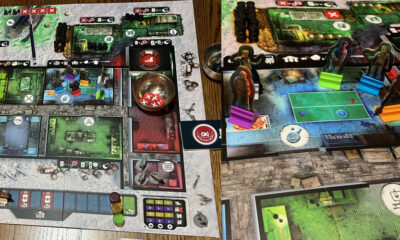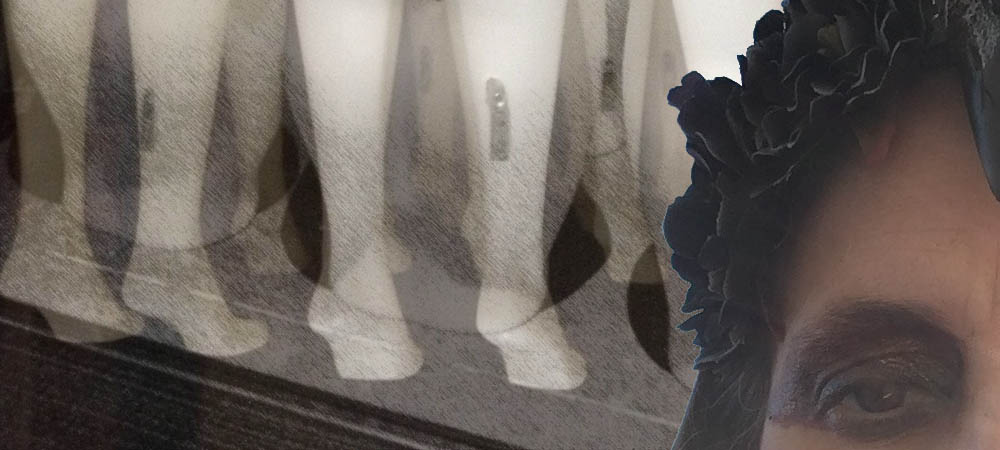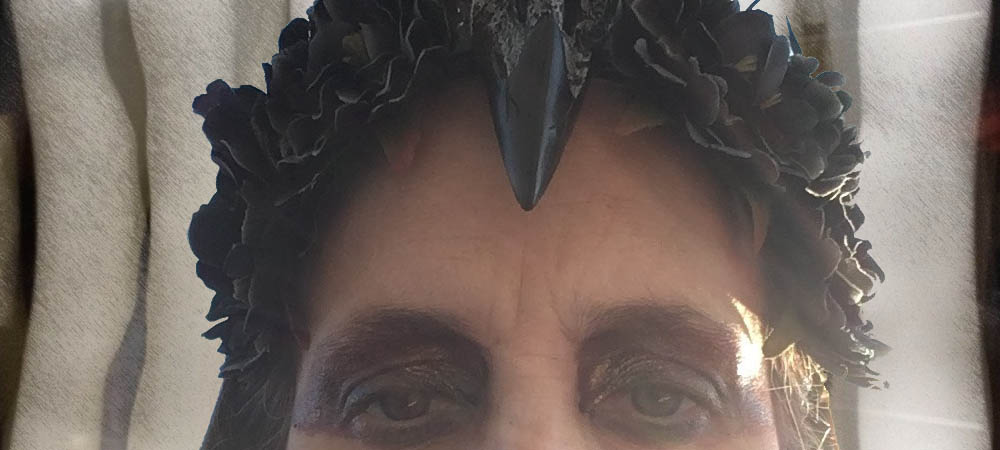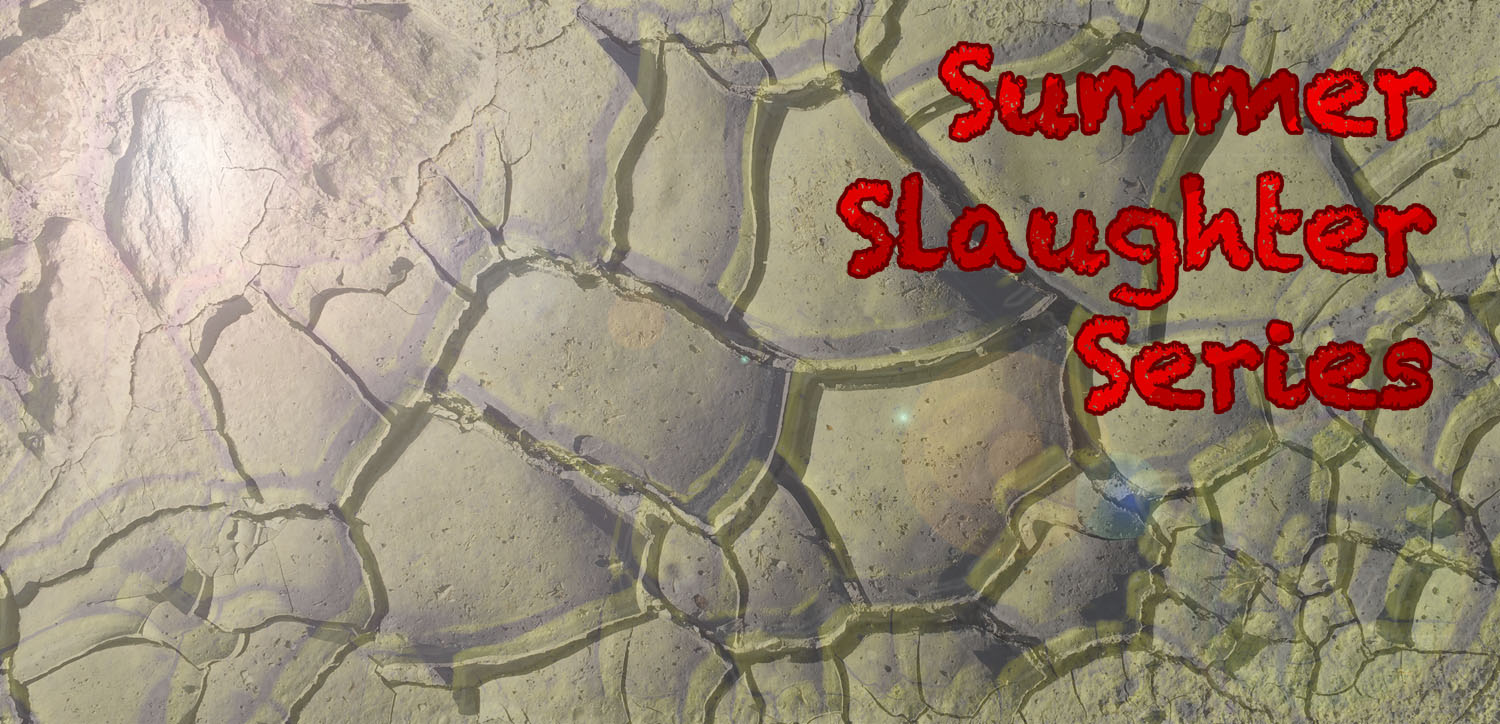
Summer Slaughter Series: Chapter 4
Warning, make sure you read PART 1, PART 2 and PART 3 before continuing…
The ride was hard, even with the adrenaline pulsing through my veins and urging me on. With my brother’s arm around my neck, I could feel it squeezing tighter as I peddled, barely keeping us straight on the cracked and dried path.
“Hold on, Frankie. Hold on,” I choked out, coughing from the pressure of his arm and the dust swirling from long, languishing breeze against the dried lake.
He whined and cried behind me, sometimes muttering softly, “It burns…It burns!”
By the time we got to the houseboat, though, he was quiet, deadly quiet and my heart was pounding as I slung my leg over the bike to get off. His face was bone-white, sweat pouring down his skin and his eyes were wide and dark. He looked bad, real bad, and wordlessly, he held his hand up.
Whatever it was had spread, blackening his skin down to his wrist. His fingers were gnarled and the fingernails were blue and waxy. It looked dead and suddenly I could smell it. Like a smack to the face, it hit me so hard and so fast, my stomach turned before I can feel anything else.
Shaking, and vomiting, I could only smell it, could taste it in my mouth, that rancid, moist mixture of death and putrification. As much as I tried to breathe clean, fresh air, it wouldn’t dissipate. I got lungful after lungful of that sickening aroma. And it burned deep into me even after I had expelled everything and kept heaving.
After lurching back from him, my brother fell from the bike, landing on the ground. Limp like a moldy dishrag, he didn’t move.
“Fra-! Frank-!” I struggled to speak to him, to get close.
I threw the bike off of him and held my shirt to my mouth and nose, shaking him. “Frankie!”
“What the hell is going on?” I heard my mother say and I glanced to her, horrified.
“Jelly-!” I tried, feeling that seep of decay linger in my throat and sinuses, urging me to vomit again. “He’s sick! His hand!”
In an instant, she was at his side, pushing me away and looking him over. “What? Aiden, I don’t see anything. What’s wrong?”
I could only point to his hand, as it swelled in its purtification, creeping up his forearm. The fingers now looked dried and decimated like the clutched claw of a bird.
“What, Aiden? Where?!” She cried out, looking past his arm, past his hand, turning him over and over.
“His hand…” I whispered in disbelief as she held that arm, that disgusting and grotesque husk, and was unaffected. Even as she held it, I watched as some skin sloughed off in her hand, leaving oozing trails silver pus between her fingers.
“Damn it, Aiden!” She yelled, “Where?”
But she couldn’t see it, I realized, she couldn’t see what I could see. Couldn’t even smell it. Even as she was holding it, even as it was breaking apart in her hands, she just couldn’t see it.
Original Series
Nightmarish Nature: Just Jellies
Today on Nightmarish Nature we’re gonna revisit The Blob and jiggle our way to terror. Why? ‘Cause we’re just jellies – looking at those gelatinous denizens of the deep, as well as some snot-like land-bound monstrosities, and wishing we could ooze on down for some snoozy booze schmoozing action. Or something.
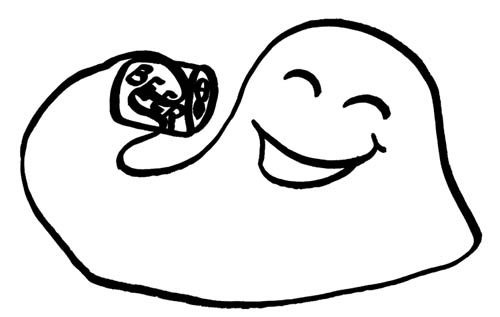
Honestly, I don’t know what exactly it is that jellyfish and slime molds do but whatever it is they do it well, which is why they’re still around despite being among the more ancient organism templates still in common use.
Jellyfish are on the rise.
Yeah, yeah, some species like moon jellies will hang out in huge blooms near the surface feeding, but that’s not what I meant. Jellyfish populations are up. They’re honing in on the open over-fished ocean and making themselves at home. Again.
And, although this makes the sea turtles happy since jellies are a favorite food staple of theirs, not much else is excited about the development. Except for those fish that like to hide out inside of their bells, assuming they don’t accidentally get eaten hanging out in there. But that’s a risk you gotta take when you’re trying to escape predation by surrounding yourself in a bubble of danger that itself wants to eat you. Be eaten or be eaten. Oh, wait…
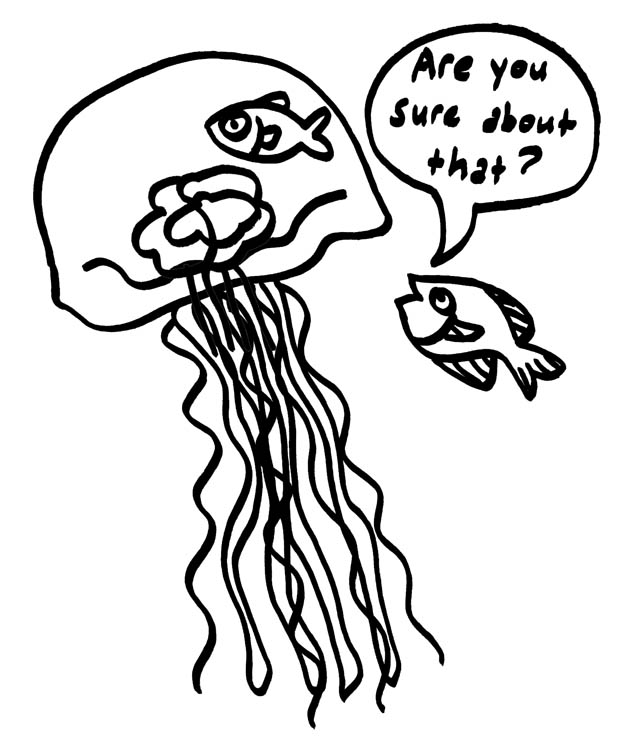
So what makes jellies so scary?
Jellyfish pack some mighty venom. Despite obvious differences in mobility, they are related to anemones and corals. But not the Man o’ War which looks similar but is actually a community of microorganisms that function together as a whole, not one creature. Not that it matters when you’re on the wrong end of a nematocyst, really. Because regardless what it’s attached to, that stings.
Box jellies are among the most venomous creatures in the world and can move of their own accord rather than just drifting about like many smaller jellyfish do. And even if they aren’t deadly, the venom from many jellyfish species will cause blisters and lesions that can take a long time to heal. So even if they do resemble free-floating plastic grocery bags, you’d do best to steer clear. Because those are some dangerous curves.
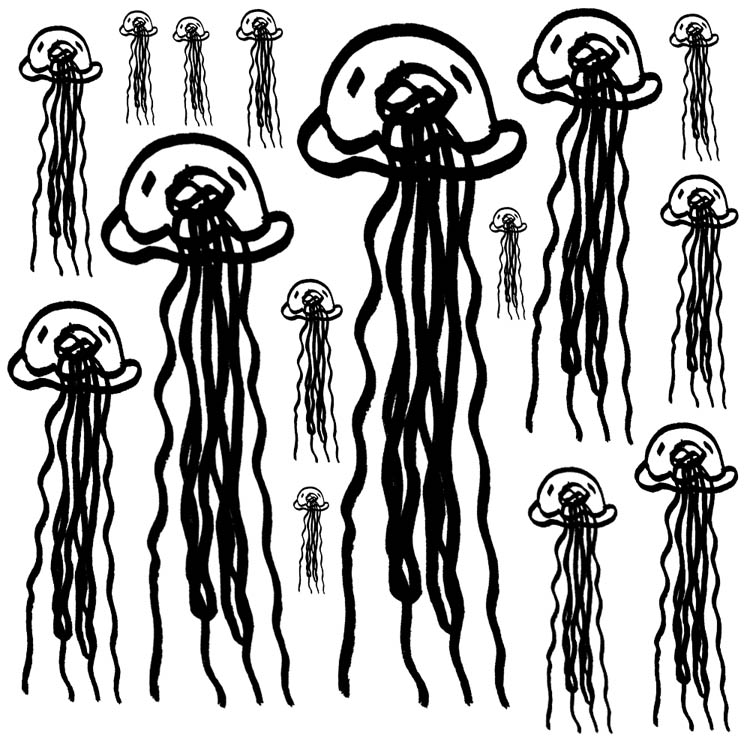
But what does this have to do with slime molds?
Absolutely nothing. I honestly don’t know enough about jellyfish or slime molds to devote the whole of a Nightmarish Nature segment to either, so they had to share. Essentially, this bit is what happened when I decided to toast a bagel before coming up with something to write about and spent a tad too much time in contemplation of my breakfast. I guess we’re lucky I didn’t have any cream cheese or clotted cream…
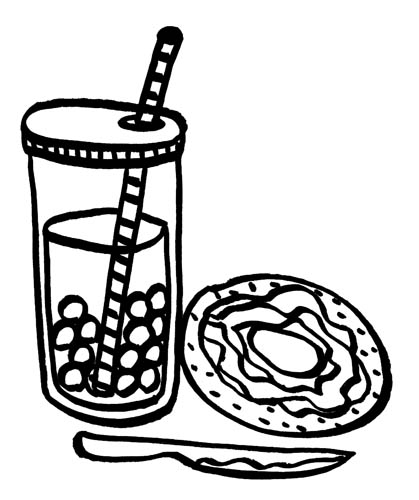
Oh, and also thinking about gelatinous cubes and oozes in the role-playing game sense – because those sort of seem like a weird hybrid between jellies and slime molds, as does The Blob. Any of those amoeba influenced creatures are horrific by their very nature – they don’t even need to be souped up, just ask anyone who’s had dysentery.
And one of the most interesting thing about slime molds is that they can take the shortest path to food even when confronted with very complex barriers. They are maze masterminds and would give the Minotaur more than a run for his money, especially if he had or was food. They have even proven capable of determining the most efficient paths for water lines or railways in metropolitan regions, which is kind of crazy when you really think about it. Check it out in Scientific American here. So, if we assume that this is essentially the model upon which The Blob was built, then it’s kind of a miracle anything got away. And slime molds are coming under closer scrutiny and study as alternative means of creating computer components are being explored.
Jellies are the Wave of the Future.
We are learning that there may be a myriad of uses for jellyfish from foodstuffs to cosmetic products as we rethink how we interact with them. They are even proving useful in cleaning up plastic pollution. I don’t know how I feel about the foodstuff angle for all that they’ve been a part of various recipes for a long time. From what I’ve seen of the jellyfish cookbook recipes, they just don’t look that appealing. But then again I hate boba with a passion, so I’m probably not the best candidate to consider the possibility.
So it seems that jellies are kind of the wave of the future as we find that they can help solve our problems. That’s pretty impressive for some brainless millions of years old critter condiments. Past – present – perpetuity! Who knows what else we’d have found if evolution hadn’t cleaned out the fridge every so often?
Feel free to check out more Nightmarish Nature here.
Original Series
Lucky Lucky Wolfwere Saga Part 4 from Jennifer Weigel
Continuing our junkyard dawg werewolf story from the previous St. Patrick’s Days… though technically he’s more of a wolfwere but wolfwhatever. Anyway, here are Part 1 from 2022, Part 2 from 2023 and Part 3 from 2024 if you want to catch up.
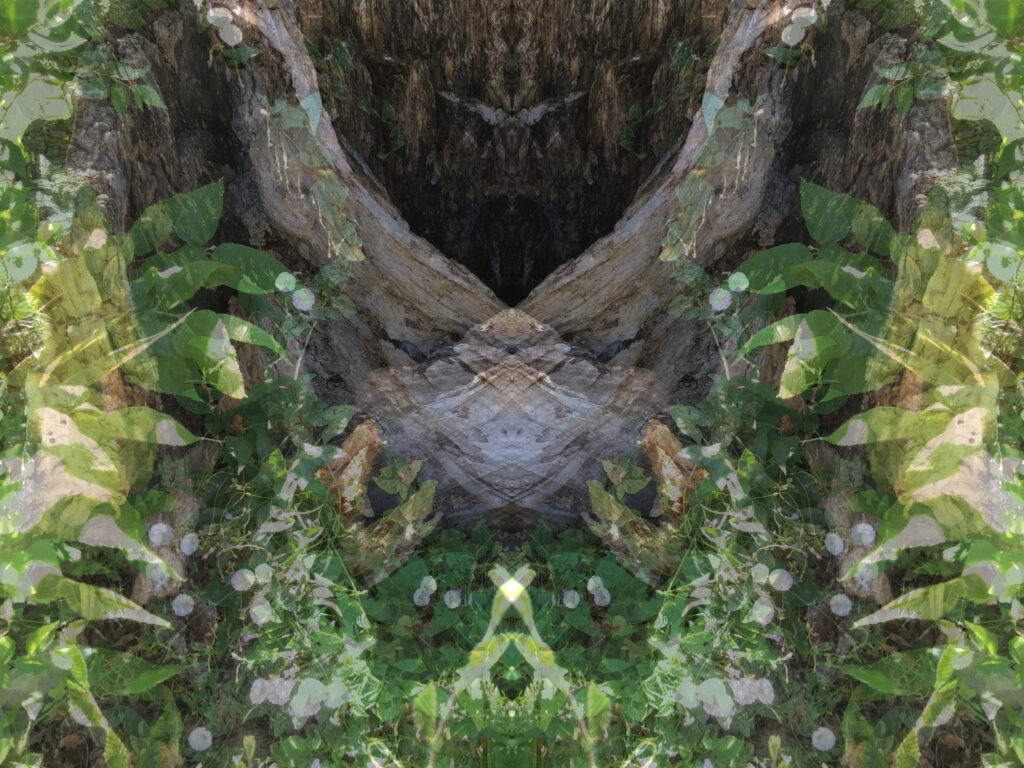
Yeah I don’t know how you managed to find me after all this time. We haven’t been the easiest to track down, Monty and I, and we like it that way. Though actually, you’ve managed to find me every St. Patrick’s Day since 2022 despite me being someplace else every single time. It’s a little disconcerting, like I’m starting to wonder if I was microchipped way back in the day in 2021 when I was out lollygagging around and blacked out behind that taco hut…
Anyway as I’d mentioned before, that Scratchers was a winner. And I’d already moved in with Monty come last St. Patrick’s Day. Hell, he’d already begun the process of cashing in the Scratchers, and what a process that was. It made my head spin, like too many squirrels chirping at you from three different trees at once. We did get the money eventually though.
Since I saw you last, we were kicked out of Monty’s crap apartment and had gone to live with his parents while we sorted things out. Thank goodness that was short-lived; his mother is a nosy one for sure, and Monty didn’t want to let on he was sitting on a gold mine as he knew they’d want a cut even though they had it made already. She did make a mean brisket though, and it sure beat living with Sal. Just sayin.
Anyway, we finally got a better beater car and headed west. I was livin’ the dream. We were seeing the country, driving out along old Route 66, for the most part. At least until our car broke down just outside of Roswell near the mountains and we decided to just shack it up there. (Boy, Monty sure can pick ‘em. It’s like he has radar for bad cars. Calling them lemons would be generous. At least it’s not high maintenance women who won’t toss you table scraps or let you up on the sofa.)
We found ourselves the perfect little cabin in the woods. And it turns out we were in the heart of Bigfoot Country, depending on who you ask. I wouldn’t know, I’ve never seen one. But it seems that Monty was all into all of those supernatural things: aliens, Bigfoot, even werewolves. And finding out his instincts on me were legit only added fuel to that fire. So now he sees himself as some sort of paranormal investigator.
Whatever. I keep telling him this werewolf gig isn’t all that it’s cracked up to be, and it doesn’t work like in the movies. I wasn’t bitten, and I generally don’t bite unless provoked. He says technically I’m a wolfwere, to which I just reply “Where?” and smile. Whatever. It’s the little things I guess. I just wish everything didn’t come out as a bark most of the time, though Monty’s gotten pretty good at interpreting… As long as he doesn’t get the government involved, and considering his take on the government himself that would seem to be a long stretch. We both prefer the down low.
So here we are, still livin’ the dream. There aren’t all that many rabbits out here but it’s quiet and the locals don’t seem to notice me all that much. And Monty can run around and make like he’s gonna have some kind of sighting of Bigfoot or aliens or the like. As long as the pantry’s stocked it’s no hair off my back. Sure, there are scads of tourists, but they can be fun to mess around with, especially at that time of the month if I happen to catch them out and about.
Speaking of tourists, I even ran into that misspent youth from way back in 2021 at the convenience store; I spotted him at the Quickie Mart along the highway here. I guess he and his girlfriend were apparently on walkabout (or car-about) perhaps making their way to California or something. He even bought me another cookie. Small world. But we all knew that already…
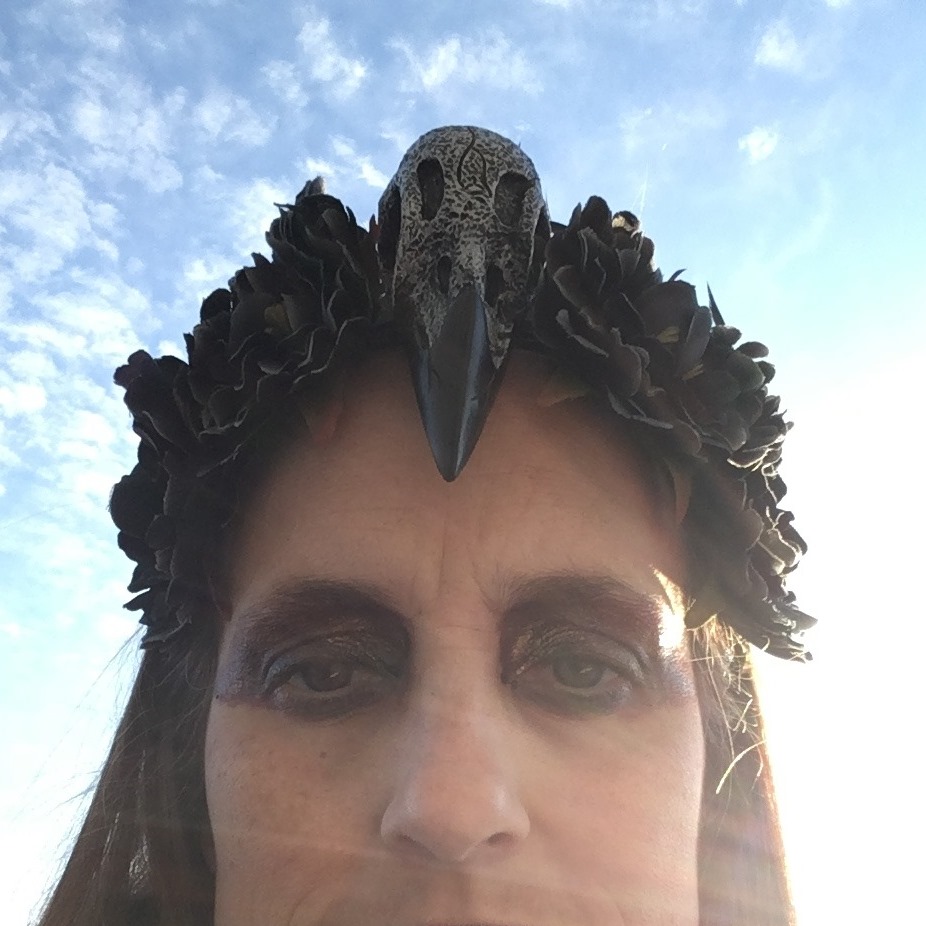
If you enjoyed this werewolf wolfwere wolfwhatever saga, feel free to check out more of Jennifer Weigel’s work here on Haunted MTL or here on her website.
Original Series
Nightmarish Nature: Monstrous Mimicry
So what better follow up to Invisibles Among Us in Nightmarish Nature than Monstrous Mimicry? Further exploring the leaps that critters will go to in order to eat and not be eaten. This time we’re focusing on those creatures that want to intentionally be mistaken for one another.
Insects Pretending to Be Insects
This is a pretty common subgroup in the mimicry set. Featuring such celebrities as the Viceroy Butterfly, which looks an awful lot like the Monarch. Why? Because everyone knows Monarch Butterflies taste nasty and cause indigestion. Duh? Though it appears the Viceroy took further cues from this and is not all that tasty in its own right either. Dual reinforcement is totally the way to go – it tells predators not to eat the yucky butterflies regardless. But some bugs go a bit further in this, imitating one another to seek out food or protection. Various wasps, spiders, beetles, and even some caterpillars impersonate ants for access to their nest or because ants aren’t as appetizing as their buggy counterparts to much of anything outside of the myrmecophagous crowd (as shared before, here’s a fun diversion with True Facts if you have no idea), though some also have nefarious plans in mind. And similarly, the female photoris fireflies imitate other firefly signals luring smaller males to try to mate with them where they are instead eaten.
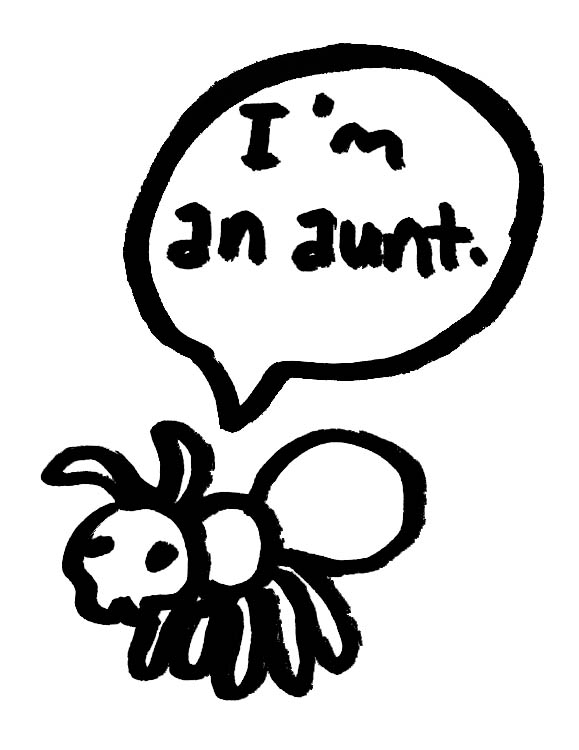
Kind of Weird Mimicry: Insects Pretending to Be Animals
Moths are pretty tasty, as far as many birds and small mammals are concerned, so several of them find ways to appear less appetizing. Using mimicry in their larval form, they may try to look specifically like bird scat or even like snakes to drive away predators, with elaborate displays designed to reinforce their fakir statuses. And once they emerge as moths, they continue these trends, with different species flashing eye spots to look like owls, snakes, cats, and a myriad of other animals most of their predators don’t want to tangle with. But other insects pretend to be larger animals too, with some beetles and others producing noises often associated with predator, typically towards the same end – to deter those who might otherwise eat them.
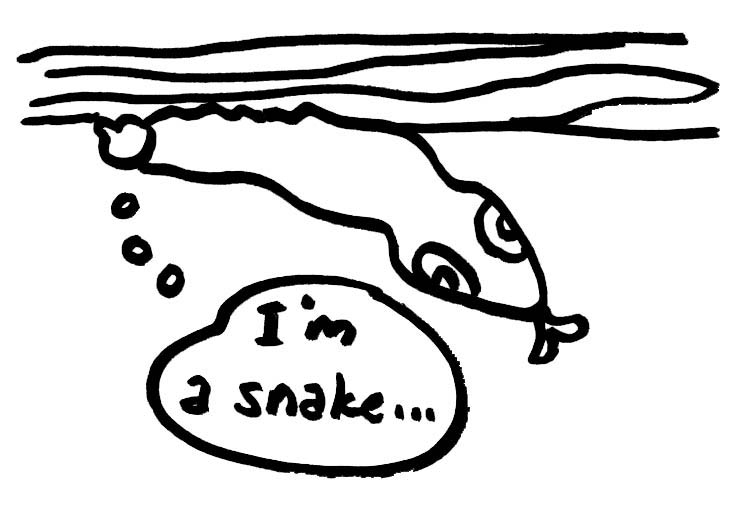
Animals Pretending to Be Animals
Similarly some animals will mimic others. Snakes may resemble one other, as seen in the Milk versus King versus Coral Snakes and the popular rhyme, Red with Black is safe for Jack or venom lack, but Red with Yellow kills a fellow for all that it isn’t 100% accurate on the Red-Yellow end (better to err on the side of caution than not – so assume they are deadly). Fish and octopuses will imitate other fish for protection status or to conceal opportunistic predatory behaviors. And lots of animals will mimic the sounds others make, though Lyrebirds tend to take the cake in this, incorporating the vocalizations into mating rituals and more.
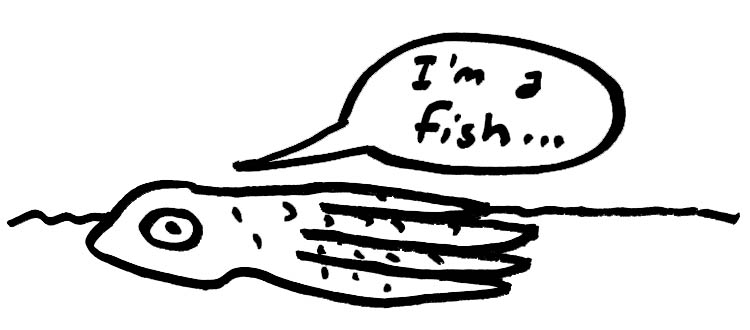
Really Weird Mimicry: Animals Pretending to Be Insects
Some of the weirdest mimicry comes out in animals pretending to be insects or small fish, where a predator will flick its strangely formed tongue that looks like a fish or water nymph to draw in more tiny critters that feel safe with their own, only to find themselves snapped up as dinner. Snapping turtles are notorious for this, disguising themselves in the muck to make their big asses less obvious and reinforce the ruse. Even some snakes do this.
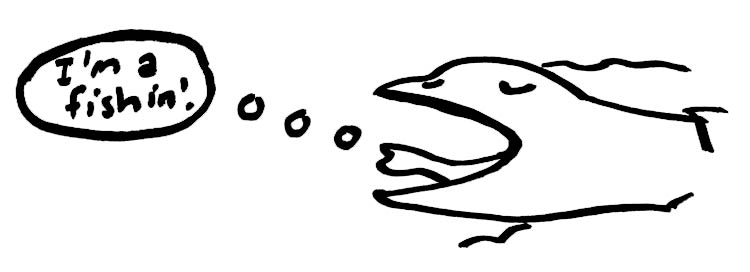
Weirder Still
Then there are things that pretend to be plants. Like orchid mantises. Or sea slugs that look like anemones (some of which eat anemones and have stingers to match). I mentioned a few of these in the Invisibles Among Us segment last time, because some are highly specialized to look like very specific things and others just aren’t. Essentially, nature loves to play dress up and be confusing and adaptive. It’s like Halloween year round. And who can really argue with that?
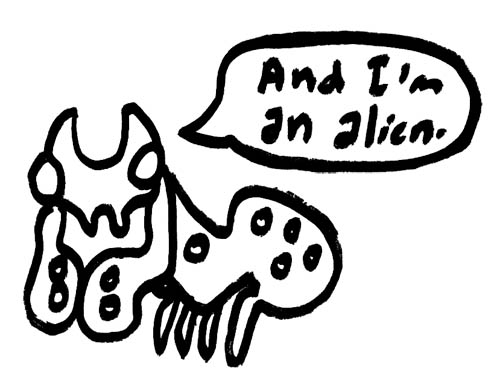
Here’s a fun video from Animalogic exploring some of these themes. And feel free to check out more Nightmarish Nature here.


